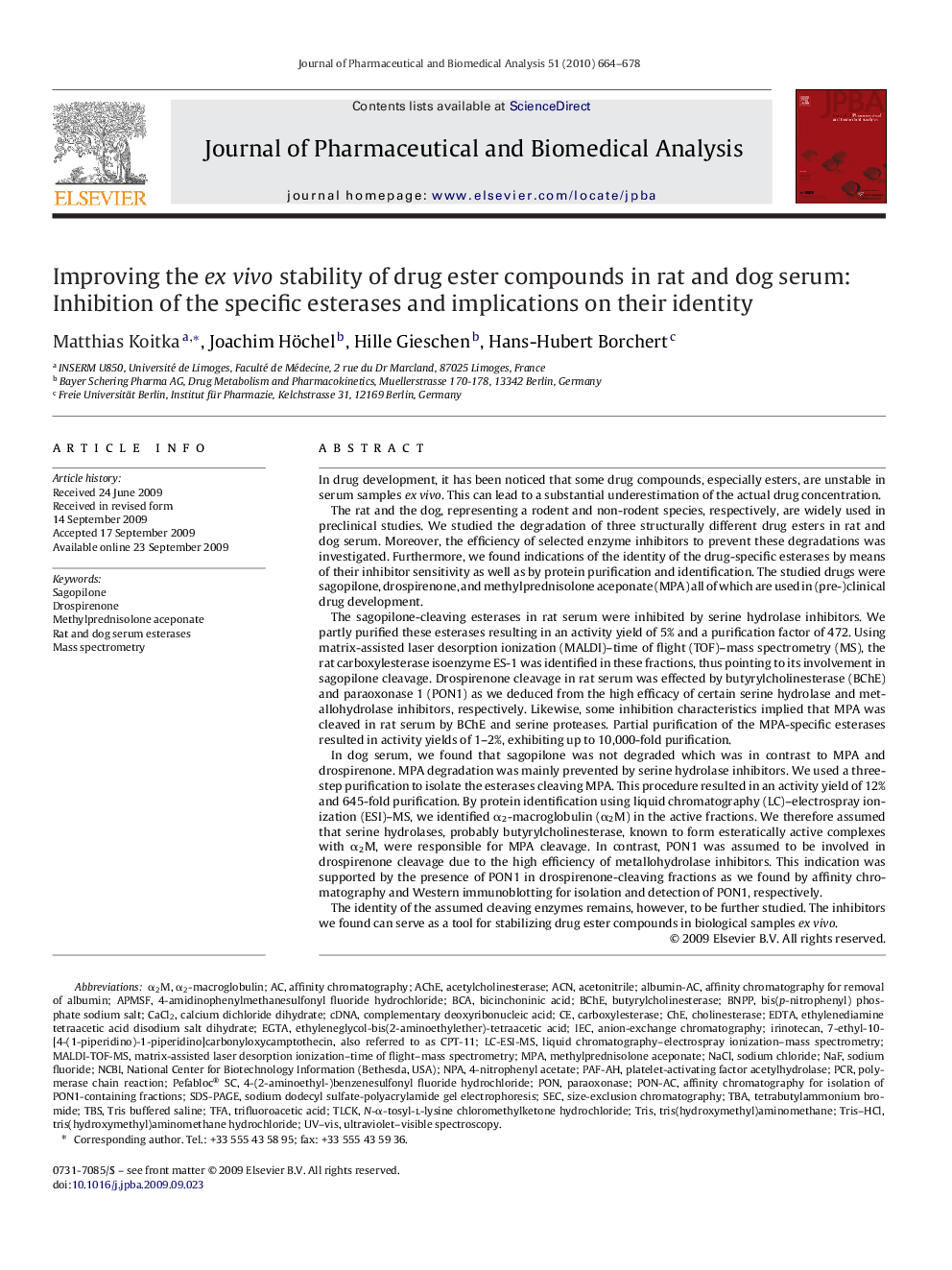| کد مقاله | کد نشریه | سال انتشار | مقاله انگلیسی | نسخه تمام متن |
|---|---|---|---|---|
| 1222449 | 967864 | 2010 | 15 صفحه PDF | دانلود رایگان |

In drug development, it has been noticed that some drug compounds, especially esters, are unstable in serum samples ex vivo. This can lead to a substantial underestimation of the actual drug concentration.The rat and the dog, representing a rodent and non-rodent species, respectively, are widely used in preclinical studies. We studied the degradation of three structurally different drug esters in rat and dog serum. Moreover, the efficiency of selected enzyme inhibitors to prevent these degradations was investigated. Furthermore, we found indications of the identity of the drug-specific esterases by means of their inhibitor sensitivity as well as by protein purification and identification. The studied drugs were sagopilone, drospirenone, and methylprednisolone aceponate (MPA) all of which are used in (pre-)clinical drug development.The sagopilone-cleaving esterases in rat serum were inhibited by serine hydrolase inhibitors. We partly purified these esterases resulting in an activity yield of 5% and a purification factor of 472. Using matrix-assisted laser desorption ionization (MALDI)–time of flight (TOF)–mass spectrometry (MS), the rat carboxylesterase isoenzyme ES-1 was identified in these fractions, thus pointing to its involvement in sagopilone cleavage. Drospirenone cleavage in rat serum was effected by butyrylcholinesterase (BChE) and paraoxonase 1 (PON1) as we deduced from the high efficacy of certain serine hydrolase and metallohydrolase inhibitors, respectively. Likewise, some inhibition characteristics implied that MPA was cleaved in rat serum by BChE and serine proteases. Partial purification of the MPA-specific esterases resulted in activity yields of 1–2%, exhibiting up to 10,000-fold purification.In dog serum, we found that sagopilone was not degraded which was in contrast to MPA and drospirenone. MPA degradation was mainly prevented by serine hydrolase inhibitors. We used a three-step purification to isolate the esterases cleaving MPA. This procedure resulted in an activity yield of 12% and 645-fold purification. By protein identification using liquid chromatography (LC)–electrospray ionization (ESI)–MS, we identified α2-macroglobulin (α2M) in the active fractions. We therefore assumed that serine hydrolases, probably butyrylcholinesterase, known to form esteratically active complexes with α2M, were responsible for MPA cleavage. In contrast, PON1 was assumed to be involved in drospirenone cleavage due to the high efficiency of metallohydrolase inhibitors. This indication was supported by the presence of PON1 in drospirenone-cleaving fractions as we found by affinity chromatography and Western immunoblotting for isolation and detection of PON1, respectively.The identity of the assumed cleaving enzymes remains, however, to be further studied. The inhibitors we found can serve as a tool for stabilizing drug ester compounds in biological samples ex vivo.
Journal: Journal of Pharmaceutical and Biomedical Analysis - Volume 51, Issue 3, 5 February 2010, Pages 664–678